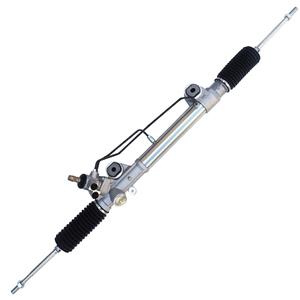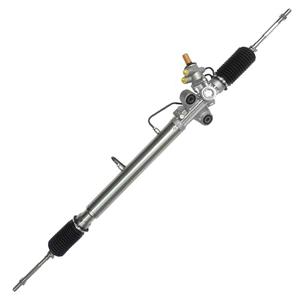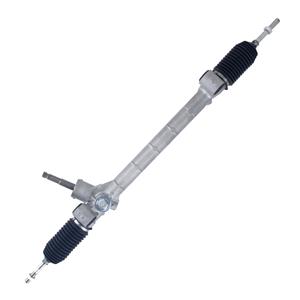What Is a Car Power Steering Rack? What Are its Types?
With the continuous development of modern automobile technology, power steering system has become a standard feature of almost all cars. One of the core components of the power steering system is the power steering rack. Its function is to help the driver turn the steering wheel more easily, thereby improving driving comfort and safety.
This article will introduce in detail what a power steering rack is, as well as its different types and working principles.
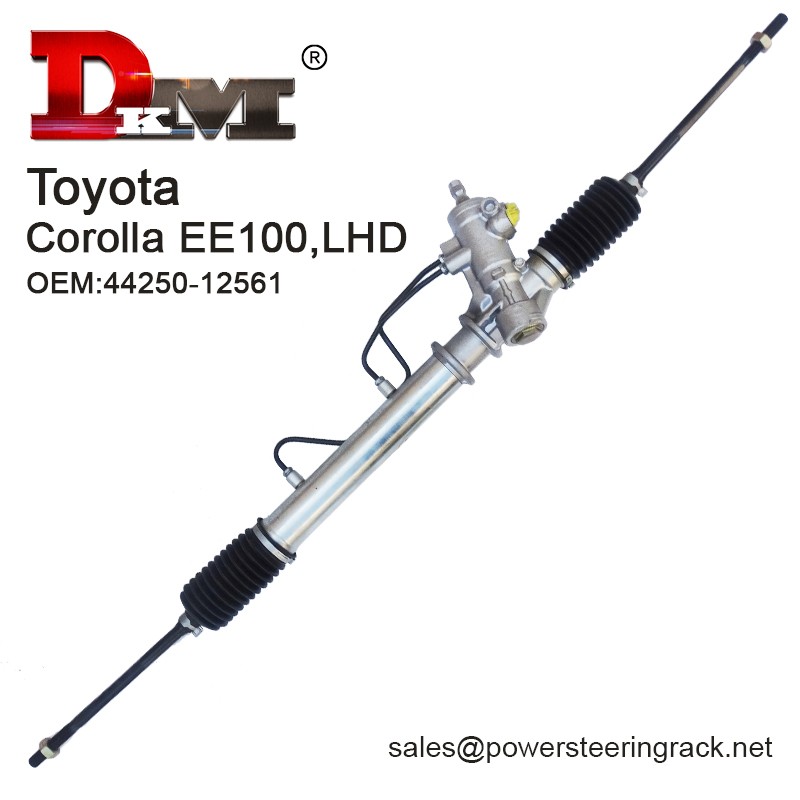
What Is a Car Power Steering Rack?
Basic Concept of Power Steering Rack:
The power steering rack is part of the car steering system. It is connected to the steering gear and steering wheel and is responsible for converting the driver's steering instructions into actual steering actions of the wheels. Traditional mechanical steering systems require the driver to apply a large force to turn the steering wheel, while power steering systems provide assistance through hydraulic or electric devices, making steering easier.
What Is the Working Principle of the Power Steering Rack?
The working process of the power steering rack: the driver turns the steering wheel → the power steering system provides assistance → the steering rack drives the wheels to turn → feedback control. The working principle of the power steering rack depends on the power steering system, which is currently divided into two main categories: hydraulic power steering (HPS) and electric power steering (EPS).
1. Hydraulic power steering system (HPS):
The hydraulic power steering system drives the hydraulic pump through the engine to deliver hydraulic oil to the power assist device in the steering rack. When the driver turns the steering wheel, the steering column drives the gear to rotate, and the hydraulic oil provided by the hydraulic pump enters the piston chamber of the steering rack through the valve, pushing the piston to generate power assist, thereby reducing the driver's operating burden. The advantages of the hydraulic power steering system are fast response speed and suitability for various driving environments, but its disadvantages are complex structure, high maintenance cost, and consumption of part of the engine power.
2. Electric power steering system (EPS):
The electric power steering system relies on the electric motor to provide power assist, and no longer requires hydraulic oil and hydraulic pump. The motor receives the signal from the sensor through the electronic control unit (ECU) and adjusts the power assist in real time to help the driver steer. The advantages of the electric power steering system are simple structure, low energy consumption, easy maintenance, and the ability to provide more intelligent power assist control, such as adjusting the power assist according to the vehicle speed. However, the electric power steering system is expensive and highly dependent on batteries and electronic components.
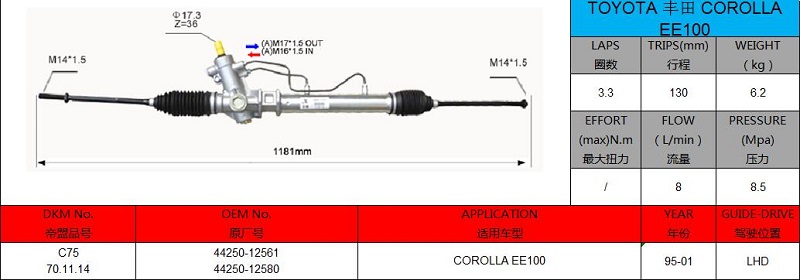
What Types of Power Steering Racks are there?
According to different power-assisting methods and structures, power steering racks can be divided into the following four types:
● Traditional Hydraulic Power Steering Rack
● Electro-Hydraulic Power Steering Rack
● Pure Electric Power Steering Rack
● Integrated Electric Power Steering Rack
1. Traditional Hydraulic Power Steering Rack:
This rack relies on the hydraulic system to provide power assistance, usually including hydraulic pumps, hydraulic lines, steering valves, hydraulic cylinders and other components. In the traditional hydraulic power steering system, when the driver turns the steering wheel, the hydraulic pump will provide power assistance through hydraulic oil, making steering operations easier.
2. Electro-Hydraulic Power Steering Rack:
The electronic hydraulic system combines electric and hydraulic power assistance methods, and provides hydraulic power assistance by driving the hydraulic pump through an electric motor. Compared with traditional hydraulic systems, electronic hydraulic systems can control the size of the power assist more flexibly, and can stop the hydraulic pump when power assist is not needed, thereby saving fuel.
3. Pure Electric Power Steering Rack:
Pure electric power steering systems rely entirely on electric motors to provide power assist, and no longer require hydraulic pumps and hydraulic lines. The electric motor detects the steering wheel's rotation angle and speed through sensors and provides appropriate power assist in real time. The pure electric power steering system has a simple structure, low energy consumption, and can provide more intelligent power assist control, but has high requirements for electronic components.
4. Integrated Electric Power Steering Rack:
The integrated electric power steering system integrates the motor, electronic control unit and steering rack together, further simplifying the system structure. This system can not only provide precise power assist control, but also integrate more intelligent functions, such as lane keeping assist and automatic parking.
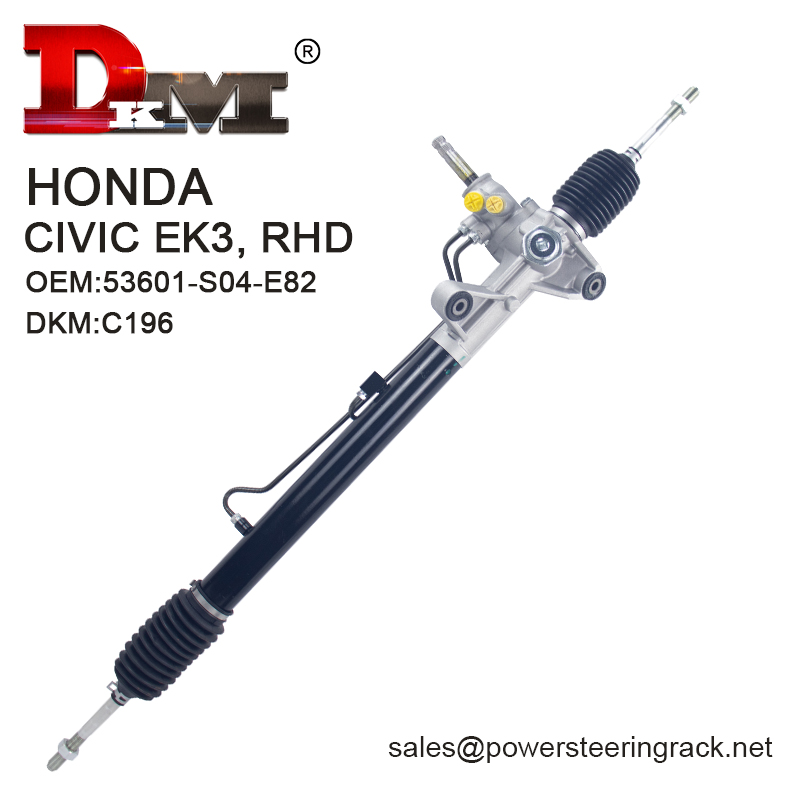
What Are the Pros and Cons of Different Types of Power Steering Racks?
1. Traditional hydraulic power steering rack:
- Pros:
● Significant power assist effect, adaptable to various driving conditions.
● The technology is mature, and it is easy to repair and replace parts.
- Cons:
● The structure is complex and the maintenance cost is high.
● It needs to be driven by a hydraulic pump, which increases fuel consumption.
2. Electronic hydraulic power steering rack:
- Pros:
● The power-assisting effect is significant, and the power-assisting size can be flexibly adjusted.
● It can save fuel and reduce the burden on the engine.
- Cons:
● The structure is relatively complex and the maintenance cost is high.
● It is highly dependent on the electronic control unit.
3. Pure electric power steering rack:
- Pros:
● Simple structure and low energy consumption.
● It can provide intelligent power-assisting control and improve driving experience.
- Cons:
● The requirements for electronic components are high and the cost is high.
● Under extreme conditions (such as low temperature environment), it may be affected to a certain extent.
4. Integrated electric power steering rack:
- Pros:
● The system is highly integrated and the structure is compact.
● It can provide more intelligent functions and improve driving safety and convenience.
- Cons:
● High cost, high requirements for manufacturing process and technology.
● Relatively complex maintenance and replacement.

Application Scenarios of Power Steering Racks
Power steering racks are widely used in different types of vehicles, including cars, SUVs, trucks and buses. Different types of power steering systems show their own advantages in different application scenarios.
1. Cars: Cars usually use electric power steering systems to provide a light and sensitive steering experience, suitable for urban roads and highways.
2. SUVs and off-road vehicles: These vehicles usually require stronger steering assistance to cope with complex road conditions and heavy loads. Hydraulic power steering systems or electronic hydraulic power steering systems are common choices.
3. Trucks and heavy vehicles: Trucks and heavy vehicles require very strong steering assistance to cope with heavy loads and long driving. Traditional hydraulic power steering systems are still widely used in these vehicles to ensure sufficient power assistance.
4. Buses: Buses require frequent low-speed steering and parking operations, and electric power steering systems are ideal for their low energy consumption and intelligent control capabilities.
Conclusion About Power Steering Rack
As the core component of modern automobile steering system, the role and type of power steering rack are of great significance to improving driving experience and safety. Through the analysis of hydraulic power steering, electric power steering and integrated power steering system, we can see the advantages and disadvantages of different types of power steering systems in different application scenarios.
If you want to know more about power steering rack, please click here!


